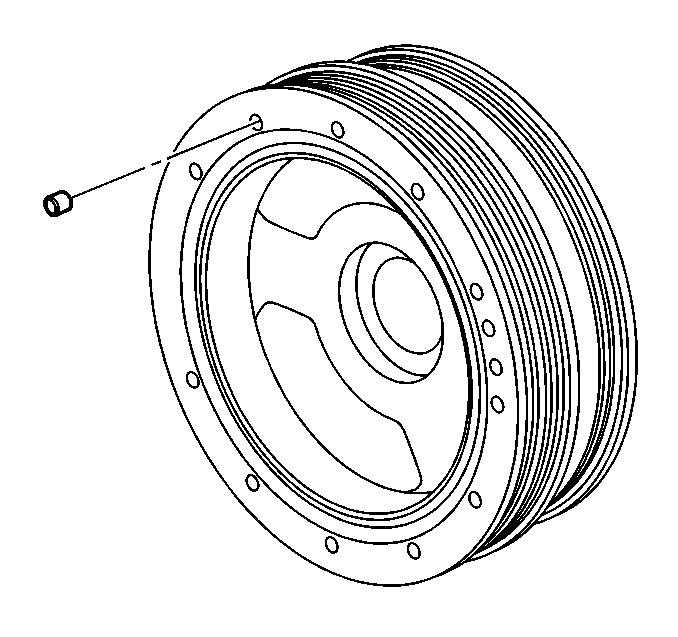
Important: The position of the crankshaft balancer must be marked before removal,
relative to the crankshaft. The balancer does not use a key or keyway for
positioning. Mark or scribe the end of the crankshaft and the balancer
before removal. The crankshaft balancer must be installed to the original
position. If replacing the crankshaft balancer, note the location of any
existing balance weights, if applicable. Crankshaft balancer weights must
be installed into the new balancer in the same location as the old balancer.
A properly installed balance weight will be either flush or below flush
with the face of the balancer.
- Check the crankshaft balancer weight holes for any existing balance
weights.
Caution: Wear safety glasses in order to avoid eye damage.
- Use a punch and position the balance weights to the bottom
of the weight holes.
- With a marking crayon, note the weight holes containing balance
weights.
- Lay the old crankshaft balancer on a bench or flat table.
Rotate the old balancer until one of the marked balance weight holes
is in the 12 o'clock position.
- Lay the new crankshaft balancer on the bench next to the old balancer.
Rotate the new balancer until one of the balance weight holes
is in the 12 o'clock position.
- With a marking crayon, mark the new balancer weight hole located
in the 12 o'clock position.
- Viewing the old balancer, note the position of the crankshaft-to-balancer
alignment mark.
Mark the new balancer in the same location.
- Measure the distance from the top of the balance weights to the
face of the old crankshaft balancer.
- Record the readings.
- Determine the proper balance weight size for the new balancer.
| • | A balance weight hole depth that measures 13.0 mm (0.512 in),
has a short balance weight in the hole. |
| • | A balance weight hole depth that measures 6.69 mm (0.263 in),
has a medium balance weight in the hole. |
| • | A balance weight hole that depth measures 0.29 mm (0.011 in),
has a long balance weight in the hole. |
| - | A short balance weight will measure 12.7 mm (0.5 in)
in length. |
| - | A medium balance weight will measure 19.0 mm (0.75 in)
in length. |
| - | A long balance weight will measure 25.4 mm (1.0 in)
in length. |
- Insert new crankshaft balance weights of the proper size into
the new balancer in the same location as with the old balancer.
A properly installed balance weight will be either flush or below flush with
the face of the balancer.


